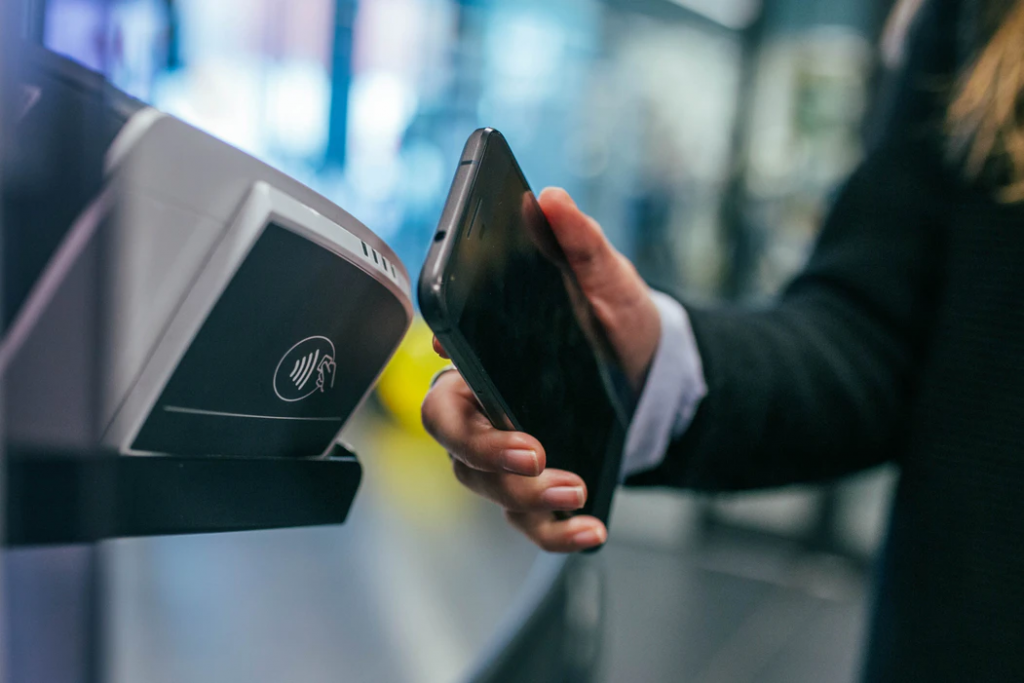No matter where you look, technology is changing the world of finance. Everything from banking to payments is being upended, and made efficient and cheaper because of innovative new solutions aided by artificial intelligence, API, blockchain, and more. These innovations are bringing about improvements to the finance industry, and it’s all thanks to the fintech revolution. These are the ways in which financial services are growing into the next decade and beyond.

The rise of challenger banks
For big banks, the formula to success has remained the same for decades: open local brick-and-mortar branches, offer basic banking services and competitive rates, and cash-in on economies of scale as customers are acquired. This previously successful model has become outdated and inefficient for much of the world, giving rise to a new type of banking.
Challenger banks are a new type of bank without any in-person branch which has come to disrupt traditional banks to their core. They have grown in popularity because of their low-cost (and oftentimes free) account options, as well as digital banking services which have been popular for younger consumers.
It is expected that by 2026, the challenger bank market will exceed $394 billion with a compound annual growth rate (CAGR) or 46.5% over that time. Challenger banks have already hit some very notable benchmarks:
- N26 – Valued at $3.5 billion and handles €2 billion in transactions per month.
- OakNorth – Broke Europe’s fintech fundraising record with a $440 million funding round.
- Monzo – A total of 3 million customers, with 55,000 new users each week.
- Revolut – 3.7 million monthly active users with a total of 7 million users across Europe.
It isn’t just new startups that are jumping in the challenger bank arena, entrenched financial institutions have created challenger banks of their own. Bank X is a new, upcoming offering from Citi, and Marcus is a creation from Goldman Sachs, both of which are technology-driven banking services that leverage the power and resources of their institutional backers.
The question for challenger banks will eventually be, how do they make money? For now, these banks are happy to tread water and gain traction in the market, but they will have to find a way to profit from their growing customer base. The valuation of these challenger banks is huge compared to the money these companies are actually pulling in. This was highlighted in the failure of Finn, a challenger bank from JPMorgan which was forced to close just one year after its launch.
To bring in revenue, some of these banks are offering paid subscription models that provide users additional features, while others are earning revenue based on payments. These banks could also venture into lending, where they could grow their profits even further. Challenger banks will need to figure out their profit dilemma if they are to truly upend traditional banks in the long run.
Banking the unbanked
According to the World Bank, there are close to 2 billion unbanked people around the world. The phrase “banking the unbanked” is being widely used throughout the fintech industry to describe innovations that will bring financial services to these individuals who do not have access to traditional banks or financial institutions.
This process first started with the use of banking through smartphones, which provided those in underserved areas the ability to bank with. Earlier versions of mobile banking used SMS and text messaging which provided anyone with a mobile connection to bank over their device. It is believed that the world’s first functional banking app was launched in 2011 by RBS, paving the way for the rise in mobile banking. Today, mobile banking is the norm which has helped to widen the breadth of banking services around the globe. Yet, there are still many ways in which those still unbanked will be offered better services in the future.
One of the most important features of helping the unbanked is creating a banking system of minimal to zero cost for the user. This is the only way that those who are economically disadvantaged can afford to maintain a bank account and use banking services.
According to some, blockchain technology will be the catalyst to drive banking services to those who don’t currently have access. Because blockchains are distributed ledgers, they are not under the control of any financial entity, and therefore operate in a decentralized manner. This creates an uncensorable and free-flowing monetary system in which anyone, no matter their country of origin or beliefs, can have access to a new type of banking system. Currently, Bitcoin is providing the most access to capital for digital currency proponents, but there is no telling if another cryptocurrency becomes the industry norm in the future.
But it’s not just about providing bank accounts to the global population, but providing them access to capital via personal and small business loans. This is an area where fintech lenders have been stepping up and creating new ways to lend outside of the traditional credit model. The traditional credit system uses only data from financial institutions to provide insight into a potential borrower’s creditworthiness. Fintechs have flipped this script, and began using alternative financial data points (utility bills, rent payments, employment history, etc.) to approve borrowers who would otherwise be left behind.
Other lending areas, such as peer-to-peer lending (P2P) are providing access to borrowers. According to academic research, p2p lenders help provide access to credit for customers underserved by traditional banks.
Security and privacy
As financial data floats between institutions and applications seamlessly, there will be an even greater need for privacy and data security. This won’t just require better security services, but better education to help consumers and businesses understand how new technology will have an impact on their financial data. In fact, according to industry insiders, data security and privacy is a primary threat to the future growth of the fintech industry.

According to Jane Barratt, chief advocacy officer at financial data company MX, the general public has no idea what is happening to their financial data, especially as it relates to the new world of open banking.
“People don’t really know where their data is going…There have been some gaps in terms of understanding by the general public about what open banking actually is. If there is a use case for sharing your data, most people understand. “I can use it to share data with my accountant or a budgeting app.” Or, “I don’t have to manually share my data through a statement or [by] writing it down for them.” But the ecosystem around it is still coalescing.
Regulations like Europe’s GDPR, along with anti-money laundering (AML) and know your customer (KMC) policies, will play a key role in the future of how financial data is secured in a world of information sharing and fluidity.
Non-banking entities get in the mix
It isn’t just challenger banks that are pushing the envelope for traditional finance, non-banking entities — mostly in the form of large technology firms — are working to take their piece of the pie in financial services.

It would be a surprise to no one if Google and Apple become the largest financial firms on the planet in the coming decades. That’s because both of these technology behemoths are slowly inching their way into providing better financial services than banks and institutions.
With its iPhone being one of the most prominent mobile devices in the world, Apple has a large user base to pull into their financial services offerings. Apple Pay already has over 383 million users and growing, already making it a sizable player in the market. The company has expanded its offerings to the Apple Card, a digital and physical credit card that works seamlessly with Apple devices.
China’s WeChat is also making headlines as a financial player, with over 800 million of its users sent money via WeChat Pay in the past year. Alipay from Alibaba also has similar statistics, with over 900 million users of its own. Google is getting in on the action too, and the company just announced it will offer checking accounts to its customers.
As technology drives financial services forward, it is tech companies, not financial institutions, that are positioned to be the future leaders of the industry.
Automated services
Automation is a key driver in providing easy-to-use financial services to customers who are looking for a more hands-off approach to banking and financial management. This started with features such as automated bill pay, and has since grown to a host of automated financial services which make it easier than ever for anyone to manage their finances.
Some of these holistic services include:
- Automatic savings – Apps like Digit and Acorns allows for automated savings without any work on the part of the user.
- Holistic money management – Mint was one of the first apps to provide a holistic approach to management, pulling information from any number of financial accounts.
- Finding the best deals – Services like Wikibuy scour the internet for the best possible deal on a given item, while Honey and other apps automatically apply coupons to online purchases and lock-in the best price.
- Financial education – Budgeting can now be done using apps and automated services to provide insights into your spending habits and where you can cut back.
Artificial intelligence is pushing these services further forward. AI can better analyze customer data and provide offers and deals based on customer habits. Banks are beginning to use artificial intelligence to examine customer data and provide them with offers better suited to their individual needs, whether it be overdraft protection, insurance, or cross-selling other financial products that fit the customer’s needs.
This automation will only continue to grow, and provide users with opportunities to automate their financial lives.
For the benefit of everyone
As fintech services grow, more and more companies will be able to offer fintech applications to the public. This competition will help drive costs down for consumers and businesses, who will benefit from the increased competition and variety of services in the financial sector. This will also help drive efforts to provide fintech services to those who currently are without adequate banking and financial infrastructure, representing large potential profits for the company’s that capture these new customers.
In this new world of democratized financial services at low costs, everyone wins. And for that, we can all thank the ongoing fintech revolution.
*As with any investment, your capital is at risk and the investments are not guaranteed. The yield is up to 6.75%. Before deciding to invest, please review our risk statement or consult with a financial advisor if necessary.